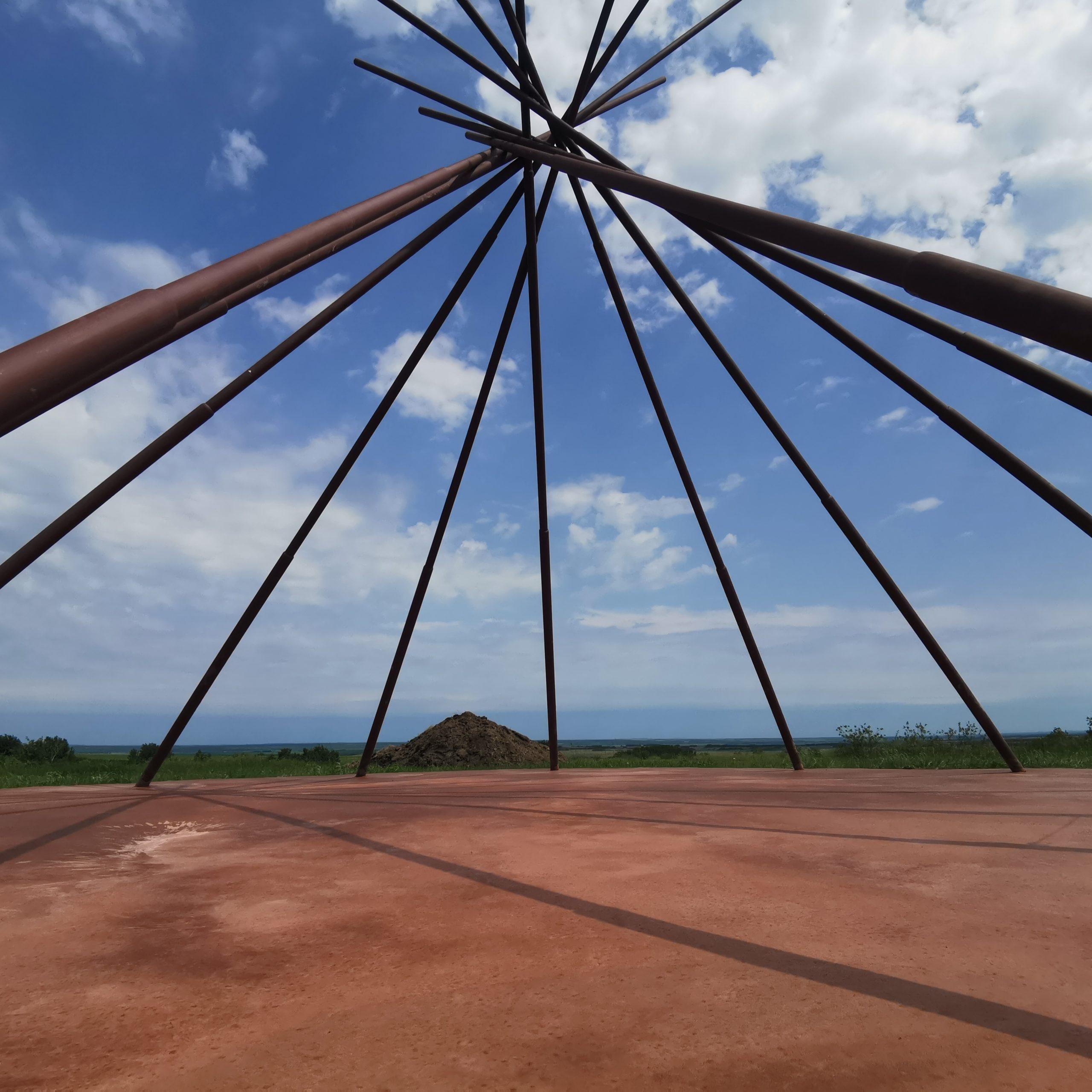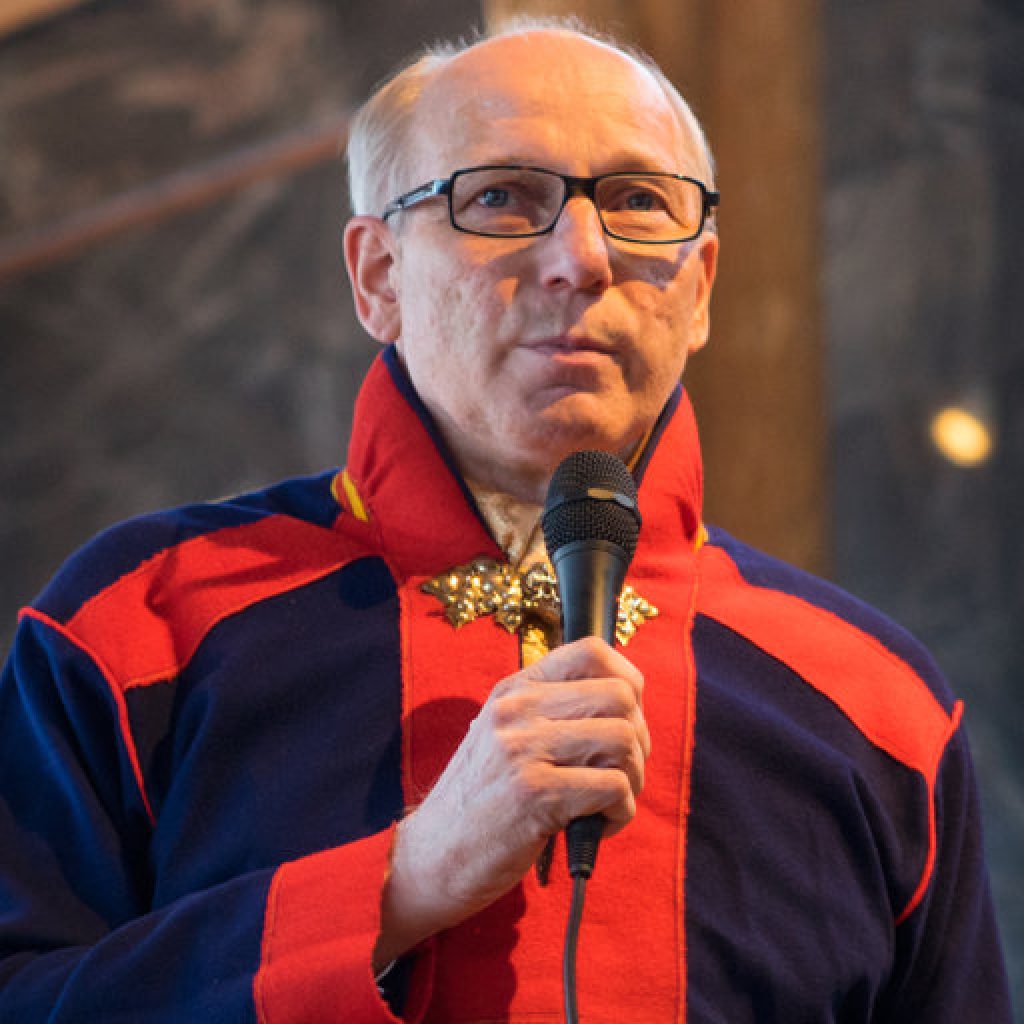Kānawāpātahmōwin: Introduction to Indigenous Visual Knowledge

The first event in the 2023 series, Indigenous Ways of Seeing, which is co-presented by the Power Institute and the Wapatah Centre for Indigenous Visual Knowledge.
This is the first event in a new series entitled "Kānawāpātahmōwin: Indigenous Visual Knowledge", convened by the acclaimed artist, scholar and curator Gerald McMaster. Over a set of four conversations, two online and two in-person, Gerald will bring together artists, academics, activists, and community members from Indigenous communities in the global Arctic, North America, and Australia to discuss their different knowledge systems, and the role visual perception plays within them.
In this event convenor Gerald McMaster will introduce the premise of the series by way of a discussion with artist and linguist Cristóbal Martínez, scholar of Sámi literature Harald Gaski and academic and educator Leroy Little Bear.
Image: Floyd Favel, Theatre Site at Poundmaker Cree Nation. Photo by Alix Van Der Donckt Ferrand.
Co-presented by the Power Institute and the Wapatah Centre for Indigenous Visual Knowledge.
People

Gerald McMaster
Gerald McMaster is the Director of Wapatah Centre for Indigenous Visual Knowledge at OCAD University in Toronto, and a leading voice nationally and internationally, with over 30 years of experience in contemporary art, critical theory, museology, and Indigenous aesthetics. He is Plains Cree from the Red Pheasant Cree Nation and a member of the Siksika Nation. He has served as the Canadian Commissioner for the 1995 Venice Biennale, Artistic Director of the 2012 Biennale of Sydney, and Curator for the 2018 Venice Biennale of Architecture. He is the recipient of Governor General’s Awards for Visual and Media Arts from the Canada Council for his prolific curatorial legacy. McMaster has served as Adjunct Curator for Remai Modern since 2018.

Postcommodity
Postcommodity is an interdisciplinary art collective comprised of Cristóbal Martínez (Mestizo), and Kade L. Twist (Cherokee). Postcommodity’s art functions as a shared Indigenous lens and voice to engage the assaultive manifestations of the global market and its supporting institutions, public perceptions, beliefs, and individual actions that comprise the ever-expanding, multinational, multiracial and multi-ethnic colonizing force that is defining the 21st Century through ever increasing velocities and complex forms of violence. Postcommodity works to forge new metaphors capable of rationalizing our shared experiences within this increasingly challenging contemporary environment; promote a constructive discourse that challenges the social, political and economic processes that are destabilizing communities and geographies; and connect Indigenous narratives of cultural self-determination with the broader public sphere. The collective has received numerous grants, and has been exhibited nationally and internationally.

Harald Gaski
Harald Gaski was born and grew up on the river Deatnu in Sápmi, on the 70th latitude in the northernmost county in Norway. Gaski is an author, editor, and a professor in Sámi literature at Sámi allaskuvla (Sámi University of Applied Sciences) in Guovdageaidnu and a professor in Sámi culture and literature at UiT – The Arctic University of Norway. He has been instrumental in establishing Sámi literature as an academic field and has translated Sámi literature and Nils-Aslak Valkeapää’s poetry into Norwegian and English. His most recent book is an anthology of Sámi literature titled Myths, Tales and Poetry from Four Centuries of Sámi Literature.

Leroy Little Bear
Leroy Little Bear is a renowned educator, academic, and founder of the Native American Studies Department at the University of Lethbridge where he served as Chair for 21 years, and went on to become the founding Director of Harvard University’s Native American Program. His dedication to education, leadership, community-building and advocacy has led to a United Nations declaration on the Rights of Indigenous Peoples, changed the Constitution of Canada, and served as a shining example of global collaboration. A member of the Blackfoot Confederacy, Little Bear’s story began on the Blood Indian Reserve in Southern Alberta, Canada.

